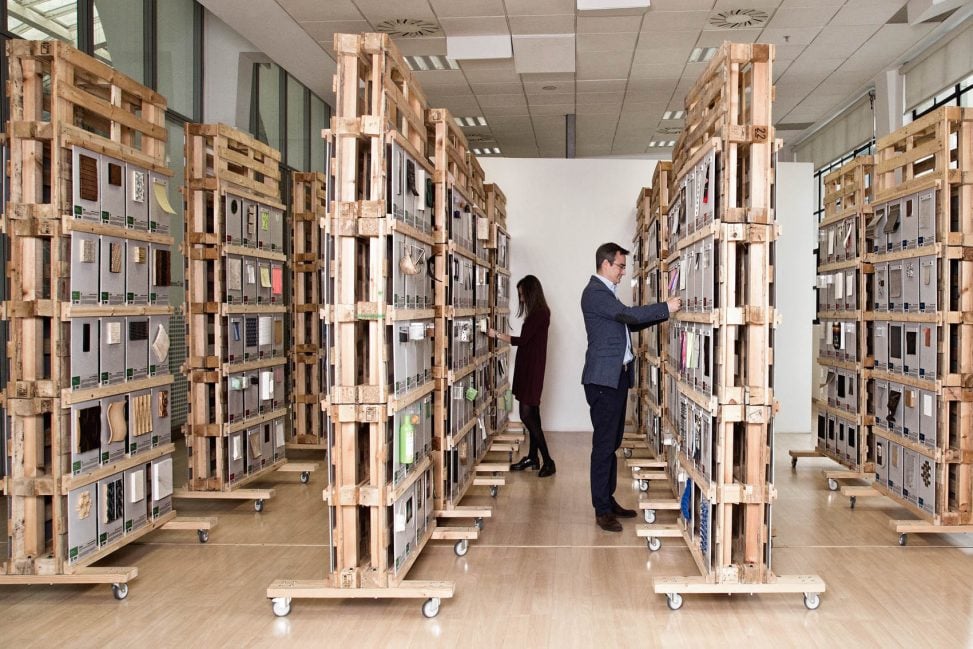When you think of tools for interior designers, you think of room planners, web clippers, and fabric swatches. For architects? 3D modeling, CAD, and BIM software.
But here’s a tool that’s useful not just for interior designers and architects, but also contractors, clients, and vendors: a digital materials library.
More than useful — a custom digital materials library is crucial to your firm if you want it to evolve from a clunky dinosaur relying on spreadsheets and PowerPoint to a smooth, well-oiled, money-making machine.
Read: Your Design Firm Needs a Digital Materials Library — Here are 9 Reasons Why
And no: A digital materials library is not just a place where you dump past projects and product information. Done right, your firm’s materials library becomes a living, breathing organism that grows more intelligent over time. It doesn’t just make your work go faster — it helps your firm become more profitable.
Here are three ways your custom digital materials library can work harder for you.
Keep Firm-Wide Institutional Knowledge Standardized and Updated
You may not know it, but you’re not just an architecture firm — you’re also a tech firm. The business of design may be entrenched in time-honored traditions and practices, but you also know that you have to keep moving with the times.
Businesses trade in technology now, and so should yours.
This means having visibility into all of your studio’s processes anywhere in the world and the ability to share and execute best practices throughout the firm.
Having your finger on historical data means being able to predict future cash flow needs with accuracy. Throw in timelines and other resources, and you’ll be able to bid on projects faster, more accurately, and more profitably than anyone else.
A senior designer leaving for greener pastures is always going to be a loss. But with a well-managed library, the blow isn’t going to be nearly as hard as it would have been 20 years ago.
Little things like immediately knowing whether a certain product has been discontinued can also save a few days’s worth of back-and-forth between vendors and designers.
Create Product Catalogs With Existing Data and Just a Few Clicks
Let’s say you’re working with one of the bigger hotel brands in the U.S. They have hundreds of franchisees scattered all over the country, and not all of them will have access to the same products. You’ll want to be able to provide options that uphold the brand, and ideally from vendors that you have relationships with.
You can create a catalog of products that franchisees can choose from. From all your existing materials, you can filter out the ones that are brand-approved and have the owners choose.
Maybe you’re working on a building that has to have certain environmental certifications. Your digital materials library should be able to provide you with options that not only meet certain standards, but also come from suppliers that, again, you have relationships with.
You can even create packages for FF&E and finishes according to your client’s budget. This is helpful for when you’ve worked with a lot of homeowners and have some idea of what they may be looking for. Being able to quickly present options will save you a lot of time.
Read: 3 Ways to Build Specbooks and Finish Schedules Faster
Go the Extra Customer Service Mile
There are dream high-profile projects that skyrocket your firm to popularity and acclaim. And then there are the repeat clients and word-of-mouth clients who are your actual bread and butter.
A big difference between the two is that the latter demands excellent customer service, on top of great design and execution.
Great customer service extends beyond the duration of the project — and we’re not just talking about callbacks.
Especially in the case of commercial buildings like hotels, hospitals, and offices, having product data like model numbers and suppliers on hand is crucial. Your property owners will appreciate the extra step you took in ensuring that should they need repairs and replacements, they can do so quickly.
You can even add a special touch like putting together a design guideline that they can share with future tenants’ designers, to ensure that they’re still adhering to the building’s brand.
Bequeathing building and product information to clients that help them preserve their assets singles you out and proves that you are well worth their money.
Read: Want to Increase Your Design Fee? Don’t Buy Into Your Client’s Beliefs
Fohlio helps you specify, procure, and manage FF&E materials data much faster and more efficiently than ever before. Get your free demo today — so you can design and build more profitable projects.
